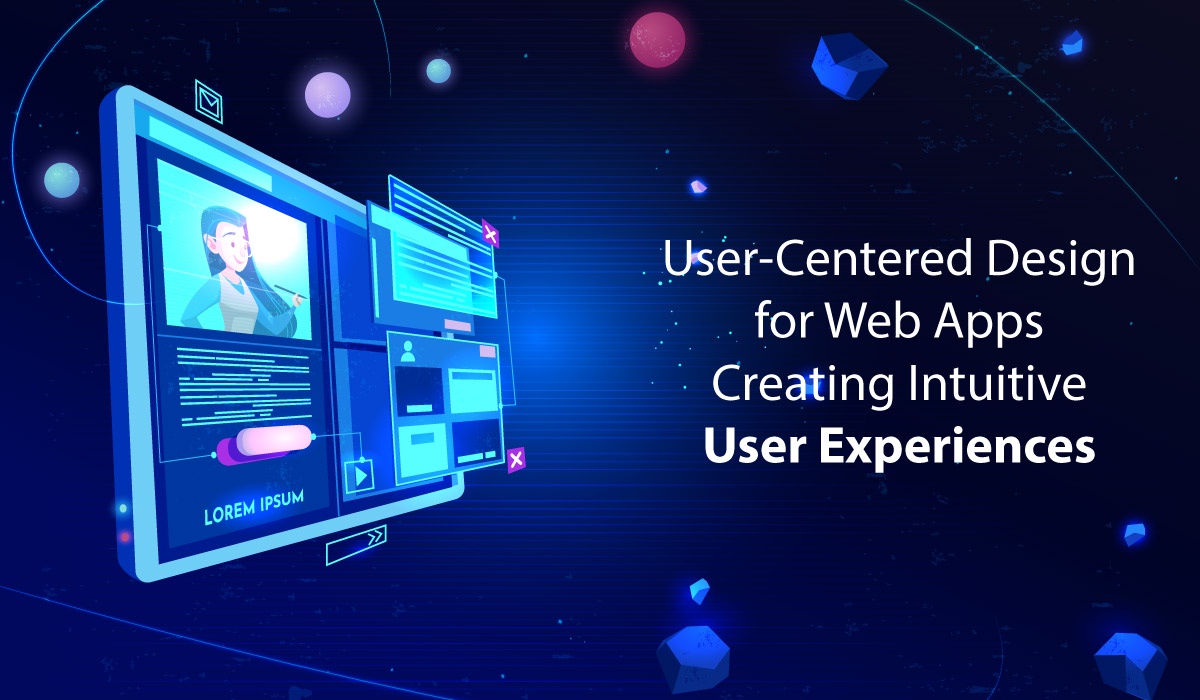In the world of web application development, creating a visually appealing and feature-rich product is no longer enough to ensure success. Today, users expect more than just functionality – they demand a seamless and intuitive experience. This is where user-centered design (UCD) comes into play. UCD focuses on putting the needs and preferences of the user at the forefront of the design process, resulting in web apps that are not only functional but also user-friendly.
In this blog, we'll explore the principles of user-centered design and provide actionable tips for creating intuitive user experiences in web applications.
Understanding User-Centered Design
User-Centered Design is an iterative design process that prioritizes users' needs and feedback at every stage of development. It involves the following key principles:
-
User Research: UCD begins with thorough research to understand the target audience. This includes creating user personas, conducting surveys, and gathering data on user behaviors and preferences.
-
Iterative Design: The design process is iterative, with frequent testing and feedback loops. This ensures that design decisions are based on real user interactions and can be adjusted as needed.
-
Usability Testing: Usability testing involves observing users as they interact with the web app. This helps identify pain points, usability issues, and areas for improvement.
-
Accessibility: UCD emphasizes creating inclusive designs that are accessible to users with disabilities, ensuring that the web app can be used by the widest possible audience.
Benefits of User-Centered Design
Implementing UCD principles in web app development offers several advantages:
-
Enhanced User Satisfaction: Users are more likely to enjoy using an app that meets their needs and preferences, leading to higher user satisfaction.
-
Reduced Development Costs: By identifying and addressing usability issues early in the design process, UCD helps avoid costly redesigns and redevelopments later on.
-
Increased User Engagement: Intuitive and user-friendly web apps encourage users to engage more with the application, increasing their loyalty and time spent on the platform.
-
Improved Conversion Rates: E-commerce web apps, in particular, benefit from UCD, as intuitive design can lead to higher conversion rates and increased sales.
Creating Intuitive User Experiences in Web Apps
Now that we've explored the fundamentals of user-centered design, let's dive into practical tips for creating intuitive user experiences in web applications:
1. Know Your Audience
The first step in UCD is understanding your target audience. Develop user personas that represent your typical users. These personas should include details like age, gender, occupation, and goals. Knowing your audience helps you tailor your web app to their specific needs and preferences.
2. Conduct User Research
User research is an ongoing process throughout the development cycle. It involves gathering feedback through surveys, interviews, and usability testing. Usability testing, in particular, is crucial for identifying pain points and areas of improvement. By observing real users interact with your web app, you can uncover issues that may not be apparent through other forms of research.
3. Prioritize Information Architecture
Information architecture is the organization and structure of content within your web app. A well-thought-out information architecture makes it easy for users to find what they're looking for. Use clear navigation menus, categorize content logically, and consider employing card sorting techniques to determine how users expect content to be organized, opined a web app development company in Toronto.
4. Focus on Mobile Responsiveness
With the increasing use of smartphones and tablets, mobile responsiveness is essential. Ensure that your web app is responsive and optimized for various screen sizes and devices. Test thoroughly to make sure all features and content display correctly on mobile devices.
5. Streamline User Flows
Map out user journeys within your web app and identify potential bottlenecks or points of confusion. Simplify these flows by removing unnecessary steps and making navigation as straightforward as possible. Users should be able to accomplish their tasks with minimal effort.
6. Design for Accessibility
Accessibility is a fundamental aspect of UCD. Ensure that your web app is accessible to users with disabilities by following accessibility guidelines such as the Web Content Accessibility Guidelines (WCAG). This includes providing alternative text for images, using semantic HTML, and offering keyboard navigation options.
7. Consistency in Design
Maintain consistency in design elements throughout your web app. Use a consistent color scheme, typography, and design patterns. Consistency helps users feel familiar with your app, making it easier for them to navigate and understand how it works.
8. Provide Feedback and Guidance
Give users feedback on their actions and provide clear guidance. For example, when a user submits a form, display a success message or an error message if something went wrong. Use micro-interactions and tooltips to guide users and inform them of system status.
9. Perform Usability Testing
Usability testing should be an ongoing process. Conduct usability tests with real users at various stages of development to catch issues early. Pay attention to user feedback and iterate on your design based on their insights.
10. Continuously Improve
User-centered design is not a one-time process. It's an ongoing commitment to improving the user experience. Collect and analyze user feedback, monitor user behavior, and adapt your web app accordingly. Regularly update and refine your app to meet changing user needs and expectations.
Remark
User-centered design is the key to creating intuitive user experiences in web applications. By understanding your audience, conducting thorough research, and prioritizing user feedback, you can build web apps that not only function well but also delight users. Remember that the design process is iterative, and continuous improvement is essential for staying competitive and meeting evolving user expectations. Incorporating UCD principles into your web app development process can lead to higher user satisfaction, increased engagement, and ultimately, greater success in the digital landscape.


No comments yet